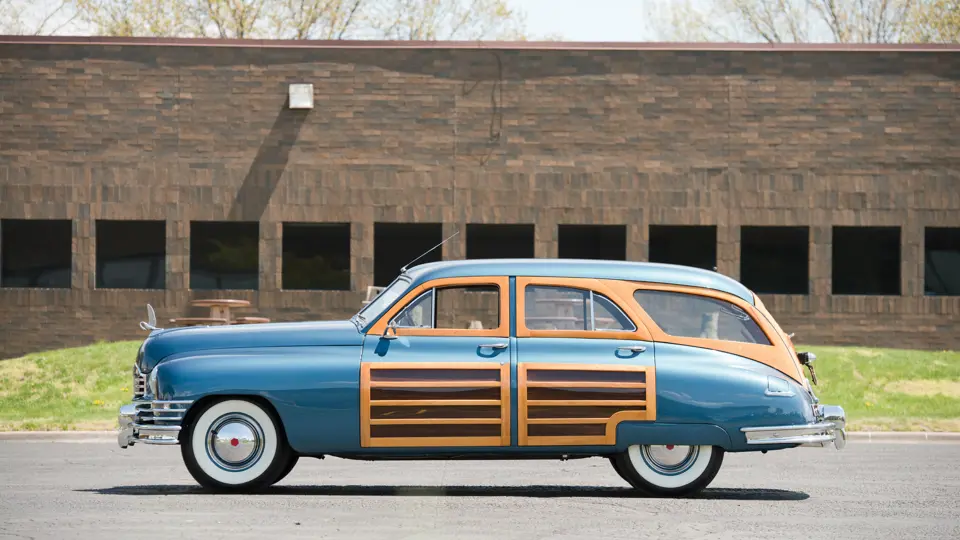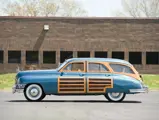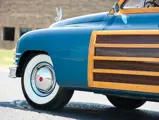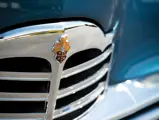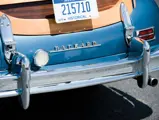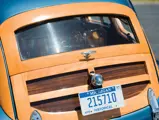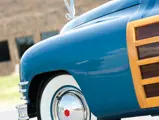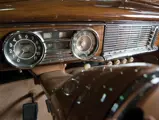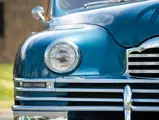Series 2301. 130 bhp, 288 cu. in. L-head inline eight-cylinder engine, three-speed manual transmission, independent coil-spring front suspension, rear semi-elliptic leaf-spring suspension, and four-wheel drum brakes. Wheelbase: 120 in.
It is amazing how quickly a tradition can catch on. Packard offered its first factory station wagons in 1940, and they were rather magnificent hand-crafted creations on the six-cylinder 110 and eight-cylinder 120 chassis. While production would last only two years, Packard’s wagons made an impact among buyers who had long favored the company’s limousines, and now they had a suitable companion for the country house. After World War II, Packard took opportunity of that brand loyalty by offering a new wood-trimmed model, which would cross the borders of town and country.
The new model was dubbed the Station Sedan, and it was essentially a Standard Eight Sedan that featured beautifully hewn white ash paneling over an all-steel body, a unique semi-fastback roofline, and rear quarter panels. While it looked for all the world like the “woodies” of old, wood played a structural role in only the tailgate, which pioneered the two-piece gate that would become a feature of most all 1950s wagons. The model was lush, evocative of a bygone era, and one of Packard’s most elegant offerings.
Unfortunately, the buying public that Packard executive and styling guru Edward Macauley saw for the model just was not there. The vast majority of Station Sedans were produced in 1948, with leftovers being renumbered to sell in 1949 and, finally, in 1950. As the wooden body required proper care that many examples did not receive, the majority of the few built have not survived, and as a result, the last of the wood-trimmed Packards have become a great rarity.
The Station Sedan offered here is one of the extremely scarce 1950 models, and it is one of the very last delivered. Prior to joining Mr. and Mrs. Kughn’s collection, it underwent a major restoration, which included the application of new, highly varnished white ash woodwork and high-quality paint in metallic Turquoise Blue. Under the hood has been nicely detailed.
Inside, the interior is of tasteful tan leather, in excellent condition, which complements nicely with the wood-grained dashboard and window moldings, as well as the tan carpets. The car is equipped with a radio and heater, as well as the optional overdrive transmission, for effortless highway cruising. Typical of a Packard, lovely details abound, including a rear seat that folds flat to provide additional cargo space, with the floor of which being made of varnished wood with chromed skid runners.
Few Station Sedans have been restored to this condition, making this an ideal car with which to complete any collection, or as the showpiece of one’s lake house, where it would look right at home alongside a Chris Craft or Hacker.




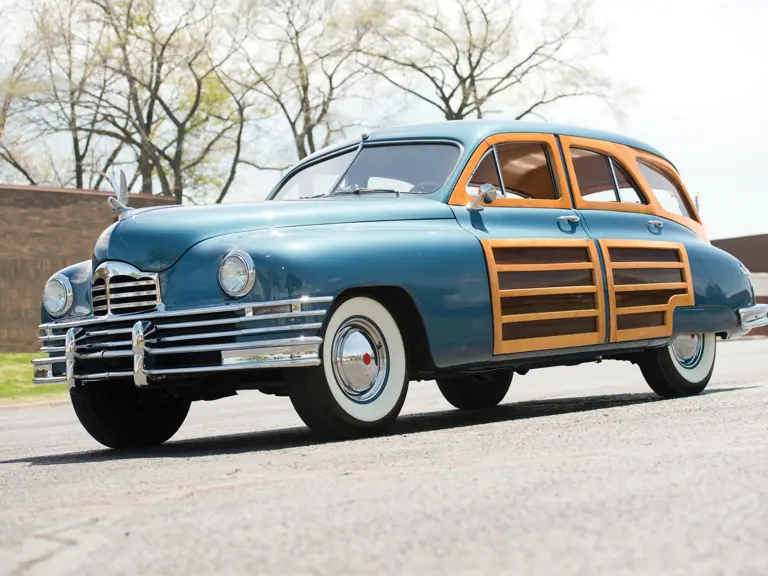
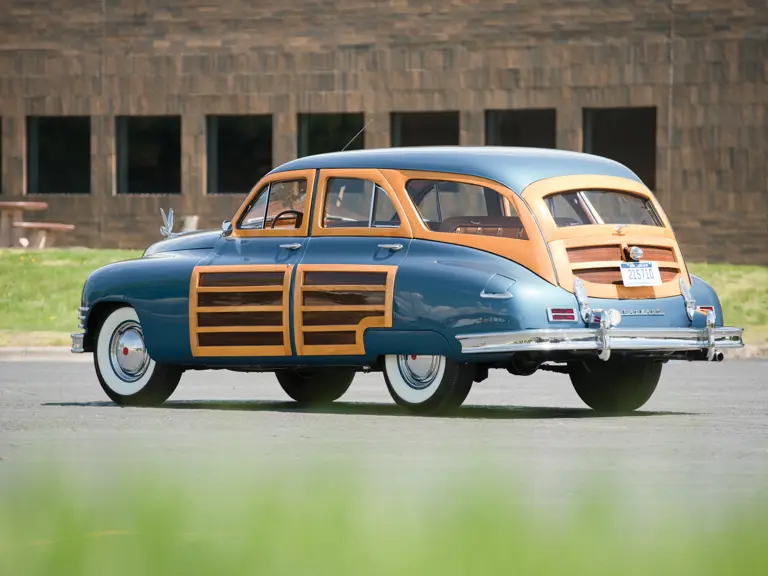

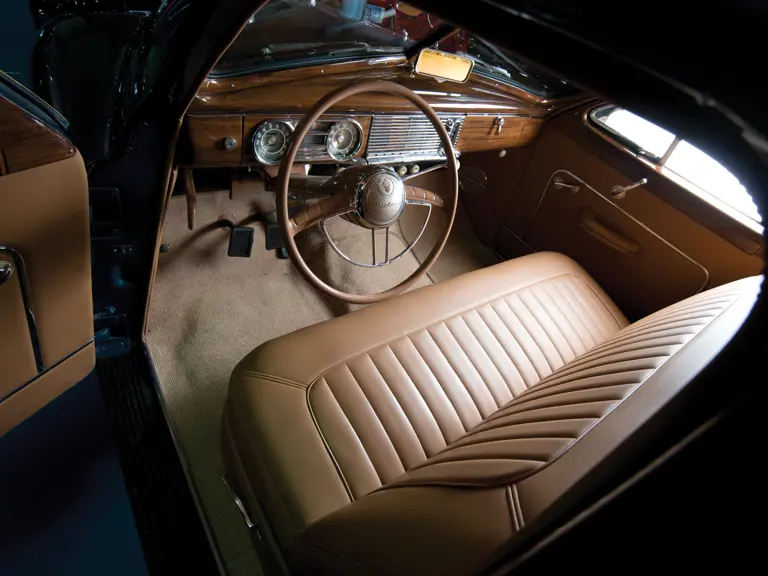
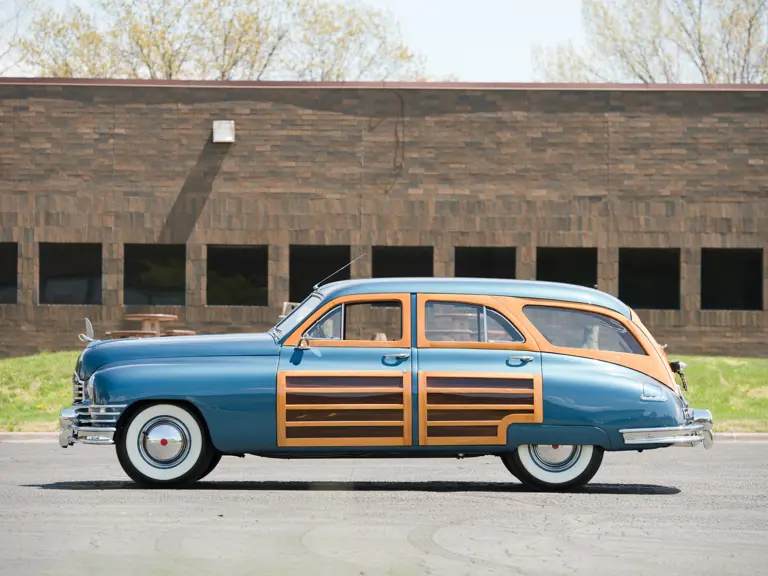

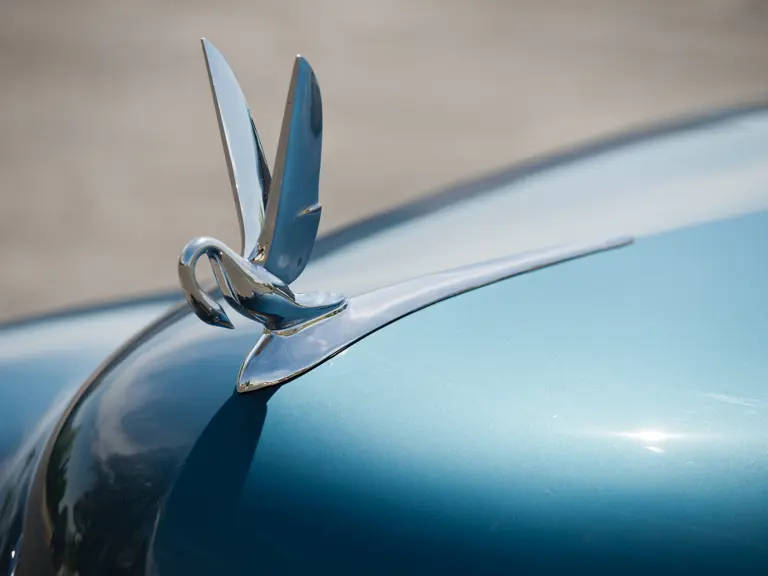
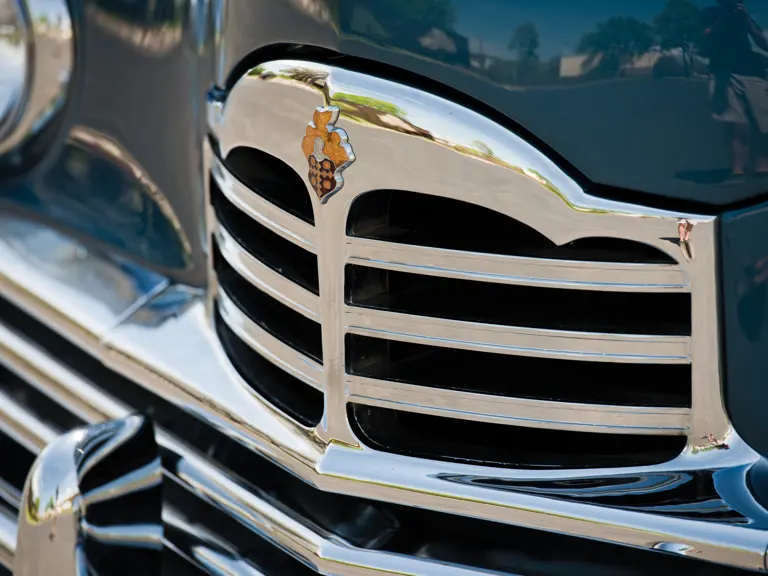


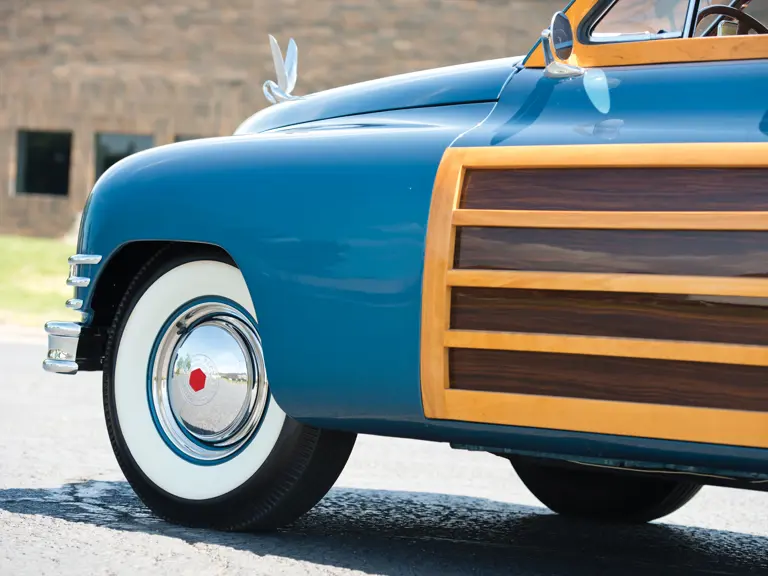
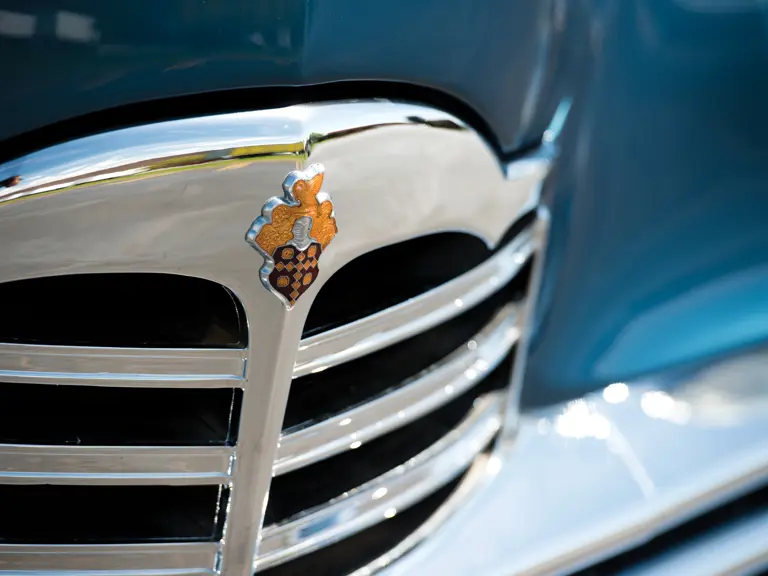

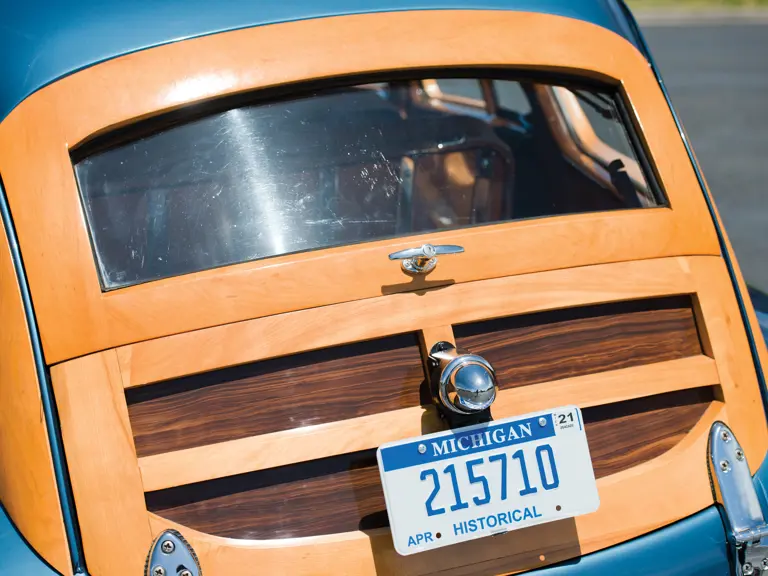


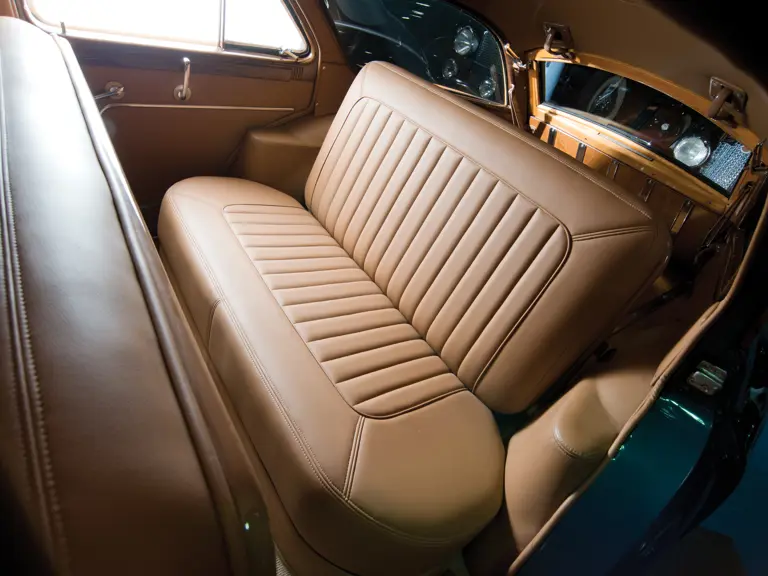





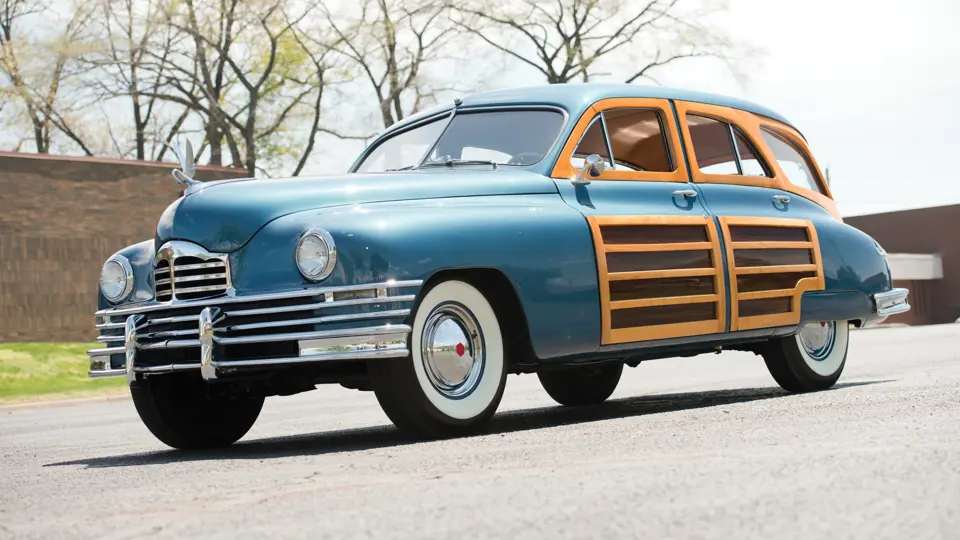
 | Amelia Island, Florida
| Amelia Island, Florida
